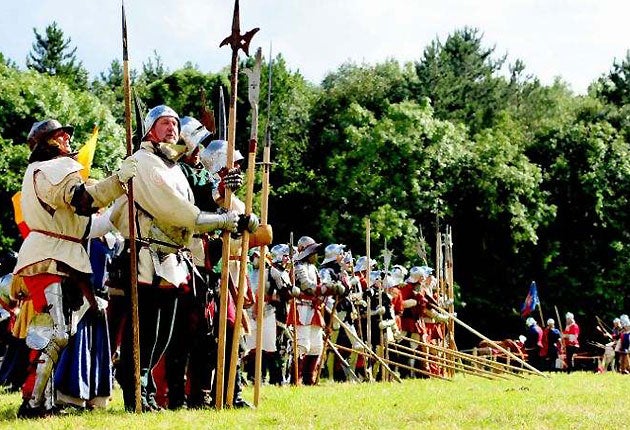How the battle of Bosworth was lost

The history books on one of Britain’s most important battles will have to be re-written. The bad news for scholars is that the Battle of Bosworth Field, which marked the end of medieval England, didn’t take place where historians thought it did. But the good news is that the mistake has saved the battlefield from being looted and destroyed by metal detectorists.
Using documentary evidence (including previously unknown manuscripts), place names, soil and peat analysis (to determine where medieval marches existed), and an archaeological metal detecting survey, a team of experts from Britain’s main battlefield archaeology organization, The Battlefields Trust, has now succeeded in finding the real location of Bosworth Field.
Their research shows that the battle took place approximately two miles southwest of the site traditionally associated with it.
But they are not revealing the exact location, for fear of its being raided by unauthorized metal detectorists.
The archaeological metal detecting survey is continuing and the battlefield trust hopes to use the emerging evidence to help reconstruct exactly how the battle was conducted.
The Battle of Bosworth Field was the final military encounter of the Wars of the Roses. Fought in 1485 between Richard III and Henry Tudor (who was crowned Henry VII after the battle), it ushered in the Tudor age and is usually seen as marking the end of the medieval period in England.
For more than 200 years, historians had thought that the battle was fought around Ambion Hill, west of the Leicestershire village of Shenton. Then in the 1980s and 1990s, various scholars proposed several other nearby sites.
So, in 2005, in order to clarify the situation, the Heritage Lottery Fund provided £154,000 to the Battlefield Trust for a 4 year investigation to investigate where the real battlefield was.
Earlier this year – at a location not previously proposed - the Trust’s archaeologists found what they believe to be the core of the battlefield. Work will now continue to define the edge of this late 15th century area of killing fields.
So far, the archaeologists have found dozen s of pieces of military material left over from the battle.
They include 19 items of artillery shot, three items of handgun shot and fragments of swords, bridle fittings, spurs – and even three coins almost certainly lost by combatants during the battle.
Most of the artillery shot are between 23 millimetres and 65 millimetres in diameter – but there was one very large ball, 93 millimetres in diameter and weighing 7.2 kilos. Covered in a layer of lead, most of the shot was made of stone. They appear to have been fired form 6-12 artillery pieces located at two positions.
Experts in medieval gunnery suspect that the artillery played a role at the beginning of the battle – but may have become less useful tactically as the battle progressed. It was notoriously difficult to turn the artillery pieces round to face new directions – so adapting to the progress of the battle would have been difficult for these early gunners. Their artillery pieces and carriages would probably have weighed between 400 and 1000 kilos each.
The finds are important because they represent by far the largest collection of 15th-16th century artillery shot ever found in Europe. The continuing investigations should help reveal whether Henry had artillery as well as Richard. History only reveals Richard as having big guns. Archaeology may now demonstrate that they both did.
Now Leicestershire County Council is planning to change some aspects of its Bosworth battlefield visitor centre to take account of the new discoveries – and the change in battle field location.
However, although the new location is not covered by the visitor centre and associated country park, the newly discovered battlefield site is visible from the top of Ambion Hill some 300 metres from the visitor centre.
The County Council is also working with the police to protect the as yet undisclosed battle field location. Archaeologists say that the reason that medieval military material remained on the battlefield is that its location was not known up till now – and has therefore not attracted attention from metal detectorists.
The newly discovered location will be announced sometime next year – and negotiations with land owners may allow some public access through existing rights of way.
The real site of the battle was only found at the very end of the four year investigation. “For more than a year we had hints we were close to the action but it was only in the last week of planned field work, in the last possible area, that the critical evidence was found,” said archaeologist Glenn Foard of the Battlefields Trust.
Join our commenting forum
Join thought-provoking conversations, follow other Independent readers and see their replies
0Comments